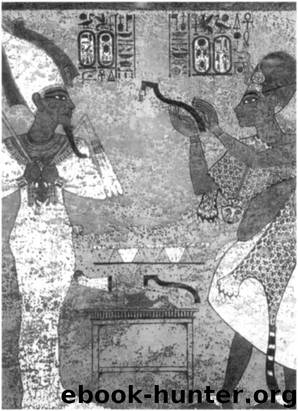Letters of the Great Kings of the Middle East by Trevor Bryce

Author:Trevor Bryce
Format: mobi
Published: 2011-01-23T10:28:26+00:00
122
Map 2: The Syrian principalities (fourteenth century)
8
THE SYRIAN PRINCIPALITIES1
The general picture
‘Syria lies at the crossroads of the Near East between Mesopotamia in the east, Anatolia in the north and Egypt in the south.’ Thus Professor Goetze began his account of the struggle for the domination of Syria in the fourteenth century.2
‘Both Mesopotamia and Anatolia are lacking in indispensable raw materials,’ he continued, ‘which they must acquire by trade. For them, then, Syria means access to world trade.’ Syria had ports where international merchandise was received and exchanged. And through Syria passed the routes which provided the links between all the great powers of the age. There were obviously important practical incentives for a great power to establish, by military force if need be, a significant presence in the Syrian region.3 Regular access to international trade was one of these. But military successes in the region were also important for their own sake—for the prestige they brought to those who achieved them. The ideology of kingship required a Great King to demonstrate his prowess in the field of battle. Syria provided a most appropriate arena for such a demonstration. To be a ‘Smiter of Asiatics’ was the proud boast of more than one pharaoh. To lead an army in triumph through Syria all the way to the Euphrates ranked as the greatest achievement of the Hittite king Hattusili I—an achievement which put him in the same league as the legendary King Sargon.
Almost inevitably, then, Great Kingship in the Late Bronze Age world entailed the capacity to impose authority over the Syrian region, or at least a substantial part of it. Syria served repeatedly as a theatre of conflict between the kingdoms of Hatti and Aleppo in the course of the campaigns launched by Hattusili I across the Taurus. Tuthmosis I and Tuthmosis III conducted a number of campaigns throughout Syria, carving their way by military conquest to the banks of the Euphrates. Mursili I destroyed Aleppo, and then led his victorious troops across Syria to their ultimate objective—the sack of Babylon. Mitannian kings were quick to exploit Hatti’s decline after the assassination of Mursili, and Egypt’s southward shrinkage of its territorial interests, by seizing upon the principalities of northern Syria and absorbing them within their own rapidly expanding 124 HISTORICAL EPISODES
empire. But, like that of its predecessors, Mitanni’s pre-eminence was shortlived. With yet another change of overlords, Suppiluliuma I wrested Tushratta’s Syrian possessions from him in a devastating one-season campaign which took his forces to the very heartland of Mitannian territory. Seven decades later, the rise of Egypt’s nineteenth dynasty brought Hatti and Egypt on to a collision course in Syria. Twice the great powers clashed at Kadesh, in the hotly disputed, ill-defined boundary region between north and south. And by this time yet another power was looming on the horizon—for Assyria undoubtedly had interests in expanding her fledgling empire across the Euphrates westwards through Syria, perhaps all the way to the Mediterranean. What were the consequences of all this for
Download
This site does not store any files on its server. We only index and link to content provided by other sites. Please contact the content providers to delete copyright contents if any and email us, we'll remove relevant links or contents immediately.
The Vikings: Conquering England, France, and Ireland by Wernick Robert(79846)
Ali Pasha, Lion of Ioannina by Eugenia Russell & Eugenia Russell(40104)
The Conquerors (The Winning of America Series Book 3) by Eckert Allan W(36960)
The Vikings: Discoverers of a New World by Wernick Robert(36903)
Cecilia; Or, Memoirs of an Heiress — Volume 1 by Fanny Burney(32396)
Cecilia; Or, Memoirs of an Heiress — Volume 3 by Fanny Burney(31778)
Cecilia; Or, Memoirs of an Heiress — Volume 2 by Fanny Burney(31749)
Empire of the Sikhs by Patwant Singh(22925)
The Secret History by Donna Tartt(18788)
Hans Sturm: A Soldier's Odyssey on the Eastern Front by Gordon Williamson(18448)
Cat's cradle by Kurt Vonnegut(15127)
Pimp by Iceberg Slim(14262)
Sapiens: A Brief History of Humankind by Yuval Noah Harari(14185)
Talking to Strangers by Malcolm Gladwell(13158)
Norse Mythology by Gaiman Neil(13156)
Leonardo da Vinci by Walter Isaacson(13128)
4 3 2 1: A Novel by Paul Auster(12245)
Underground: A Human History of the Worlds Beneath Our Feet by Will Hunt(11992)
The Radium Girls by Kate Moore(11886)
